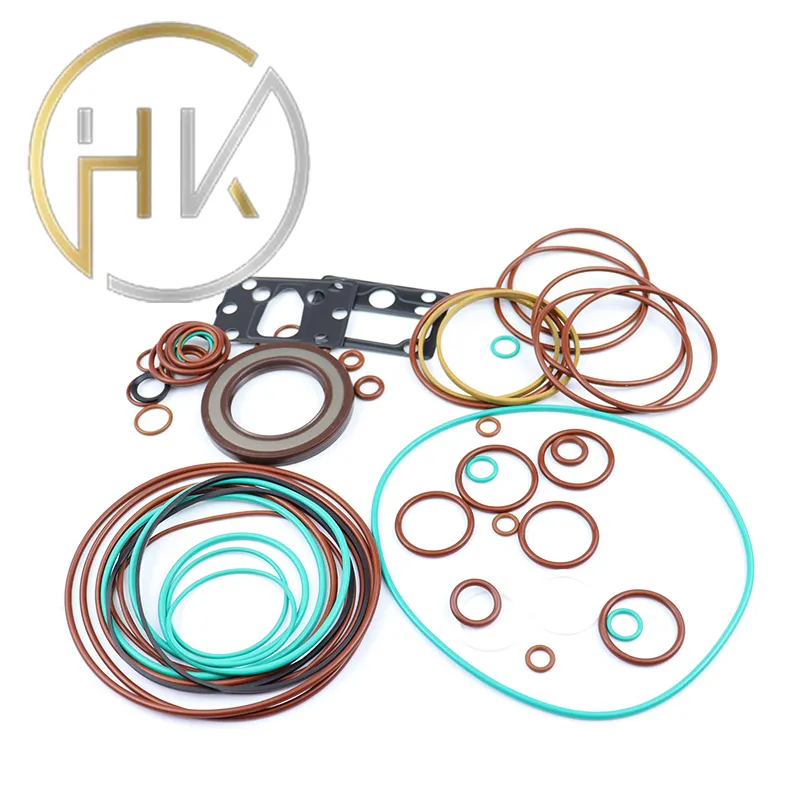Aug . 18, 2024 02:21 Back to list
Hydraulic Seal Replacement Guidelines for Optimal Performance and Longevity
Hydraulic Seal Replacement Ensuring Equipment Longevity and Efficiency
Hydraulic systems play a crucial role in various industries, from manufacturing to construction. They enable the smooth operation of machinery and equipment, relying on hydraulic fluid to transmit power effectively. However, over time, hydraulic seals can wear out, leading to leaks and reduced efficiency. Proper hydraulic seal replacement is essential for maintaining the integrity of hydraulic systems and ensuring their longevity.
Understanding Hydraulic Seals
Hydraulic seals are components that prevent fluid from leaking out of the hydraulic system while keeping contaminants from entering. They are typically made from materials like rubber, polyurethane, or PTFE (Teflon), designed to withstand the high-pressure and high-temperature conditions that characterize hydraulic applications. The primary function of these seals is to ensure a tight seal between moving parts, allowing for efficient operation without loss of hydraulic fluid.
Signs of Worn or Damaged Seals
Detecting issues with hydraulic seals early can save time and money in the long run. Common signs of worn or damaged seals include
1. Fluid Leaks One of the most apparent indications is the presence of hydraulic fluid leaking around cylinders, hoses, or connection points. 2. Decreased Performance If machinery seems to be running less efficiently or struggles to maintain pressure, it could be a sign that seals are compromised. 3. Unusual Noises Grinding, hissing, or inconsistent sounds can indicate that air is entering the system due to a failing seal. 4. Contamination Dirt, dust, or water entering the hydraulic system can lead to significant damage, making it crucial to examine seals regularly.
The Importance of Timely Seal Replacement
Neglecting to replace worn hydraulic seals promptly can lead to escalated repair costs and extended downtime. When seals fail, hydraulic fluid not only leaks out but also loses pressure, affecting equipment performance. In severe cases, it may lead to catastrophic system failure, resulting in costly repairs or even the need for complete equipment replacement. Additionally, continuous leaks pose environmental hazards and may incur compliance issues with regulatory standards.
hydraulic seal replacement

Replacing Hydraulic Seals A Step-by-Step Guide
1. Preparation Before beginning the replacement process, ensure all safety precautions are observed. Disconnect power to the hydraulic system, relieve pressure, and drain hydraulic fluid.
2. Disassembly Carefully disassemble the components housing the seals. Take note of the arrangement and condition of each component to facilitate reassembly.
3. Remove Old Seals Gently pry out the old seals using a seal removal tool. Be cautious not to scratch the surfaces or damage the components.
4. Clean and Inspect Clean the sealing surfaces thoroughly to remove any debris or old sealant. Inspect all components for wear or damage that may need attention.
5. Install New Seals Lubricate the new seals with compatible hydraulic fluid and carefully install them, ensuring they fit snugly in their designated grooves.
6. Reassembly and Testing Reassemble the components and refill the hydraulic fluid. Test the system for leaks and ensure it operates at the expected efficiency levels.
Conclusion
Hydraulic seal replacement is a vital maintenance task that can significantly impact the performance and lifespan of hydraulic systems. By recognizing the signs of seal wear and acting promptly, businesses can avoid costly repairs and ensure that their equipment runs smoothly. Regular maintenance routines should include checking seals, as this proactive approach contributes to operational efficiency and overall productivity.
-
Wiper Oil Seal: Our Commitment to Clean Hydraulics
NewsAug.13,2025
-
Hydraulic Oil Seal for Self Discharging Cars
NewsAug.13,2025
-
Hub Oil Seal for Agricultural Tractor Hubs
NewsAug.13,2025
-
Skeleton Oil Seal with NBR Material
NewsAug.13,2025
-
Rotary Lip Seal for High Pressure Applications
NewsAug.13,2025
-
Cylinder Seal Kits Our Legacy of Hydraulic Trust
NewsAug.13,2025
-
Unlocking the Potential of Hydraulic Systems with Essential Sealing Solutions
NewsAug.06,2025
Products categories
















